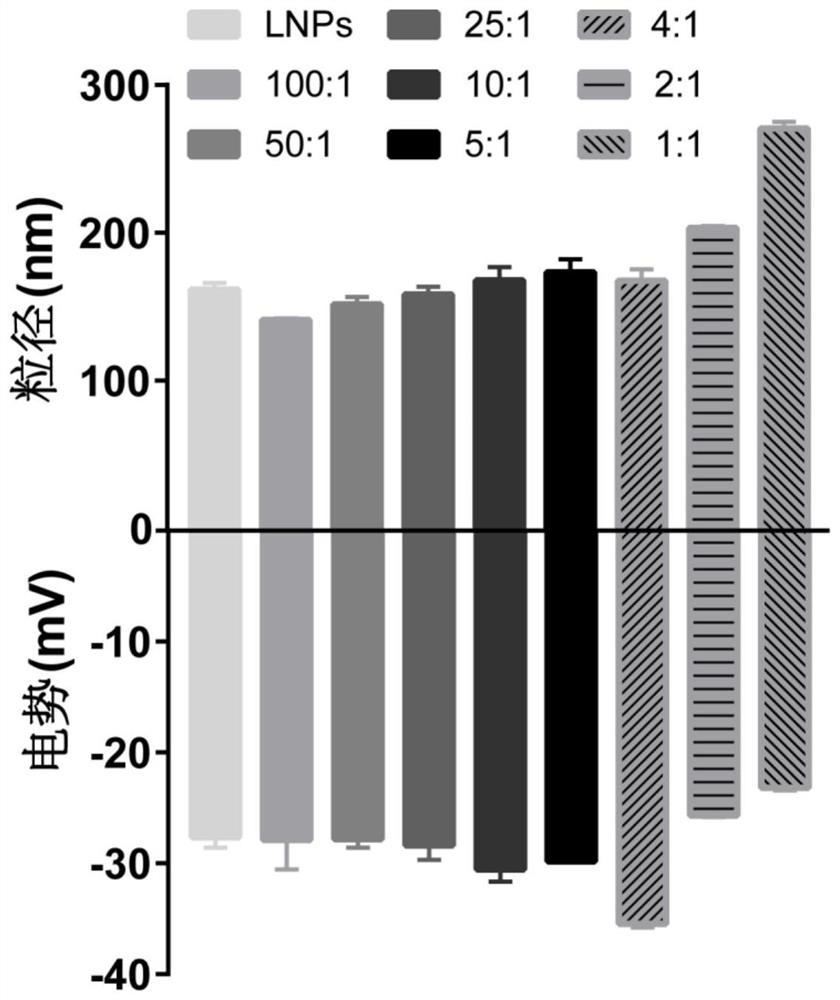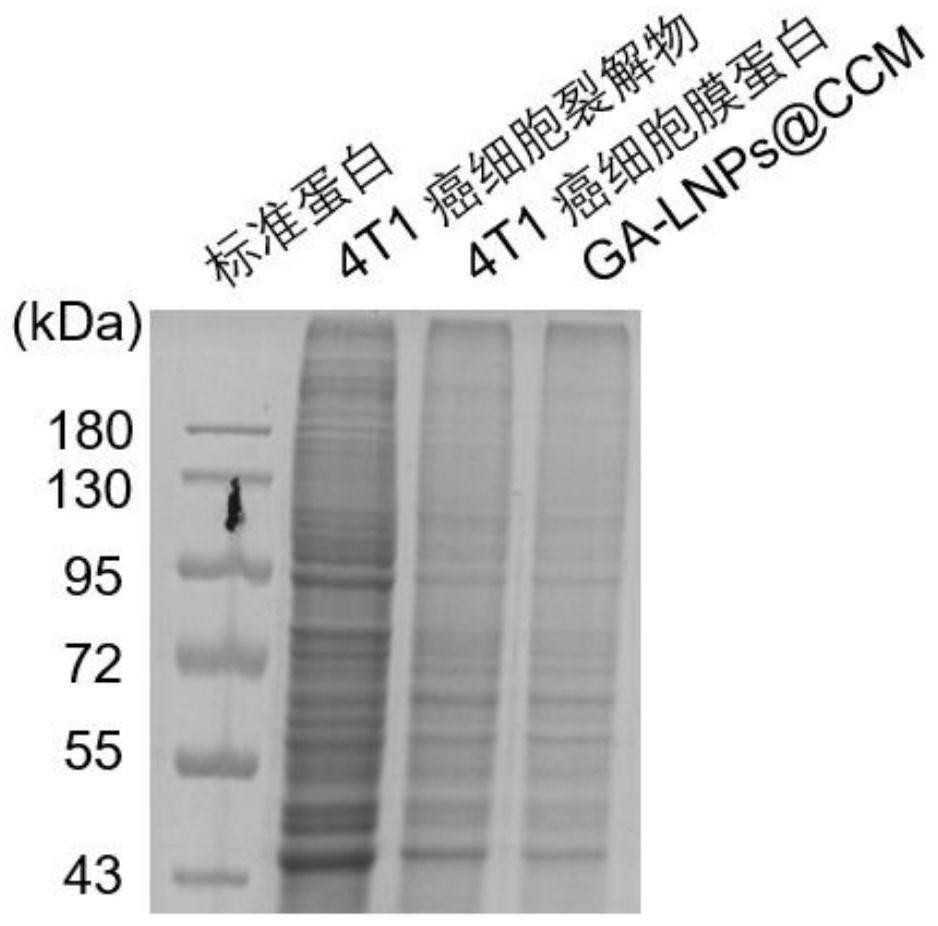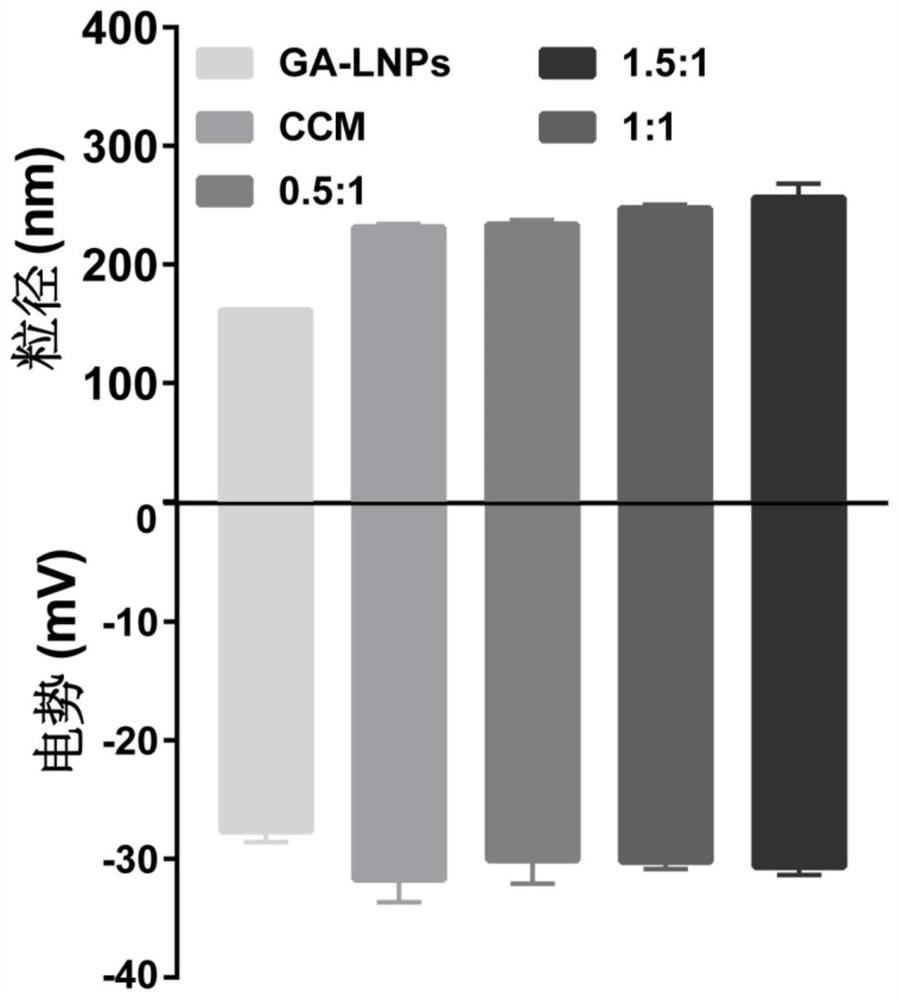Cancer cell membrane-coated drug-loaded lignin nanoparticles as well as preparation method and application thereof
A nanoparticle, cancer cell membrane technology, applied in the fields of chemical materials and biomedicine, can solve problems such as increased safety risk, long time, residue, etc.
- Summary
- Abstract
- Description
- Claims
- Application Information
AI Technical Summary
Problems solved by technology
Method used
Image
Examples
Embodiment 1
[0043]Example 1: Preparation of loaded gambogic acid lignin nanoparticles (GA-LNPs)
[0044] In order to fully combine the lignin with the drug, we mixed 100 μL 40 mg / mL lignin γ-valerolactone / water system (GWS) solution (GWS solution contains 80vol% γ-valerolactone (GVL)) with 80 μL 1 mg / mL lignin The GWS solution of gambogic acid (GA) in mL (the GWS solution contains 80 vol% GVL) was mixed at room temperature (30° C.) and kept overnight in the dark to obtain a mixed solution. Afterwards, the mixture was added dropwise to 5 mL of deionized water, stirred gently at 30 °C for 2 h, after the reaction was completed, the gambogic acid / lignin nanoparticles (GA-LNPs) were collected by centrifugation (10000 g, 10 min), and then used Wash with deionized water twice. The input mass ratio of the lignin of present example 1 and gambogic acid (GA) is 50:1.
[0045] The obtained GA-LNPs have a particle size of about 130 nm and a zeta potential of about -28 mV. The encapsulation efficien...
Embodiment 2
[0050] Example 2: Extraction of Cancer Cell Membrane (CCM) Fragments
[0051] Mouse breast cancer cells (4T1 cells, purchased from ATCC) were cultured in a petri dish with a diameter of 15 cm, and then the cells were collected with a cell scraper, centrifuged at 700 g for 10 min to obtain a cell pellet, which was the membrane protein of 4T1 cancer cells; It was resuspended in hypotonic cell lysate (containing cell membrane extraction reagent and phenylmethanesulfonyl fluoride PMSF, purchased from Shanghai Biyuntian Biotechnology Co., Ltd., and placed at 4°C for 10-15 minutes to obtain 4T1 cancer cells The lysate; then, break the cells by repeated freezing and thawing, centrifuge at 700g for 10min at 4°C, carefully collect the supernatant, and then centrifuge at 14000g for 30min to obtain cell membrane (CCM) fragments; disperse the cell membrane fragments in In water, prepare a 1.5 mg / mL cell membrane (CCM) dispersion for later use.
Embodiment 3
[0052] Example 3: Preparation of cancer cell membrane-wrapped drug-loaded lignin nanoparticles (GA-LNPs@CCM)
[0053] First, the GA-LNPs (1 mg / mL, 1 mL) in Example 1 and the CCM dispersion (1.5 mg / mL, 1 mL) in Example 2 were mixed evenly under stirring. Subsequently, the mixture was sequentially extruded through polycarbonate microporous filters with different pore sizes (1 μm, 0.8 μm, 0.45 μm) using an Avanti micro-extruder to obtain cancer cell membrane-wrapped drug-loaded lignin nanoparticles (GA- LNPs@CCM). Then, the standard protein (bovine serum albumin was purchased from Aladdin Company), 4T1 cancer cell lysate, 4T1 cancer cell membrane protein and GA-LNPs@CCM were verified by SDS-PAGE protein gel electrophoresis, and the results were as follows figure 2 shown.
[0054] figure 2 The results of SDS-PAGE protein gel electrophoresis showed that the membrane protein component of GA-LNPs@CCM was a cancer cell membrane protein, and that the cancer cell membrane successfu...
PUM
| Property | Measurement | Unit |
|---|---|---|
| Particle size | aaaaa | aaaaa |
| Particle size | aaaaa | aaaaa |
Abstract
Description
Claims
Application Information
 Login to View More
Login to View More - R&D
- Intellectual Property
- Life Sciences
- Materials
- Tech Scout
- Unparalleled Data Quality
- Higher Quality Content
- 60% Fewer Hallucinations
Browse by: Latest US Patents, China's latest patents, Technical Efficacy Thesaurus, Application Domain, Technology Topic, Popular Technical Reports.
© 2025 PatSnap. All rights reserved.Legal|Privacy policy|Modern Slavery Act Transparency Statement|Sitemap|About US| Contact US: help@patsnap.com



